Golden Week is one of the most important holidays of the year. While New Year and O-bon both have people travelling to their parents' or their home towns, GW is when people hit the road for a regular holiday. As GW is not a single holiday, but a number of one-day holidays strung together, there's a gap in the middle that people often fill with a few vacation days of their own.
But as so many people travel at the same time, most places are insanely crowded, booked solid and very expensive. So we did not travel for GW; instead I took a couple of days off right before the holidays. That way we could visit Aomori in northern Honshu without the crowds and bustle, then return to Osaka just as the crowds arrive.
We spent three nights in Aomori, with two nights in Aomori city and one at a nearby hot spring town. And just for fun, we decided to take the Shinkansen all the way up to Aomori city, then fly back home. Good decision on our part, as the train was one of the highlights of the trip.
We stopped in Tokyo on our way up. The weather was a nearly perfect late spring, with sunshine and people enjoying themselves in parks and on outdoor cafés. We had lunch, then spent a few relaxing hours people watching and shopping before we returned to Tokyo station and boarded the Shinkansen to Aomori.
A Shinkansen cleaning crew waiting for an approaching train at Tokyo station. They clean a whole train in a matter of minutes. Tip: they have stickers to give out to curious children.
The area between Osaka and Tokyo is largely urban or suburban, with cities like Kyoto, Nagoya, Shizuoka, and Yokohama, so you're always passing from one city to another. But as you move north on the Tohoku Shinkansen, Tokyo is the last large city and that really brings home just how huge the greater Tokyo area really is. You spend what feels like hours on the high-speed train passing by one extended suburb or sleeping-town after another.
The train itself was new and very comfortable. We were lucky/unlucky not to get ordinary seats, so we had to book "Green Car" seats instead. Almost decadently luxurious fully reclining seats with power plugs (always a bonus). For some reason the Tohoku line Green Car tickets were still cheaper than the normal fare on the Tokaido line between Osaka and Tokyo.
By the time we got to Aomori city the weather was lousy. Heavy clouds with rain and no more than ten degrees. We'd hoped to catch the cherry blossom, but we'd passed the advancing blossom front somewhere after Sendai. Spring was still to come.
We spent two days in Aomori city, eating, walking and visiting an old friend of Ritsuko. It's not a very vibrant city when it's dark and wet, but it has calm, wistful atmosphere, as if it is quietly waiting for better times, that is very soothing. The sea is always clos, and is if anything better in bad weather than in good. And when you get in from the dark and the rain, an izakaya will feel all the more warm, bright and welcoming.
Northern Japan is known for its seafood, and there's few better places to experience it than at a place like this. I'm enjoying a spot of nihonshu with my seafood.
Outside may be cold and gray, but inside is all the brighter and warmer by comparison. The indoor market is a treat, and we filled our bags with foodstuffs of all kinds.
There's a harbour center right next to the station, at the west end of the bridge, with shops and restaurants. This place had great modern-style organic and vegetarian food, heavy on apples — this is Aomori after all. Might be an idea to get there early; it was quite crowded, despite being off-season.
On the morning of the third day the weather gradually got better. We left the city by train for Asamushi Onsen further up the coast. It's an old hot spring resort, with lots of onsen and ryokan dating back a century or more. The train ride is quite short, and you can even glimpse Aomori city from the sea next to the train station, but the atmosphere is very different. You can feel yourself relaxing even as you walk from the station to your ryokan.
We stayed at a smaller, older ryokan toward the mountain side, about ten minutes walk from the station. It had a quiet, charming old-fashioned feel to it, and decent baths. I visited the baths once when we arrived, once at night, then again the next morning before we departed. There's also private baths available, and we went there together before dinner. I probably spent as much time in the water as out of it.
The entrance to our ryokan. They'd actually already turned off the outside lights, but immediately offered to turn them on when they saw us go outside for a picture. Good place, with good service.
Dinnertime. Ryokan are typically full-service places with dinner in your room included. This evening meal was all delicious — and a lot of food.
When they named this place after a hot spring they were not kidding. There's dozens of ryokan to stay at, and bathhouses to visit. There's hot springs — literal hot springs — right by the street where you can soak your feet or boil eggs (don't mix up the springs); and you can see steam venting out from the gutters and drains. Some cherry trees here blossom much earlier than others, as the ground and the water is constantly heated by the hot springs.
"Onsen tamago" — hot-spring eggs — is a common food in japan; somewhat jelly-like boiled eggs you eat with a salty sauce. This is the real thing: These eggs are being slowly poached in a public hot spring right on the street, and are done after 20-30 minutes. People living here apparently do this on a regular basis, and nearby stores sell eggs and nets for tourists to poach their own eggs too.
Your humble correspondent enjoying an amazingly refreshing foot bath in the cold, rainy spring weather. The other people are soaking their feet while they're waiting for their eggs to finish cooking.
This trip gave us exactly what we were looking for: a few days of peace and quiet away from the bustle of big city life. I'm happy we went, and I want to go back again.


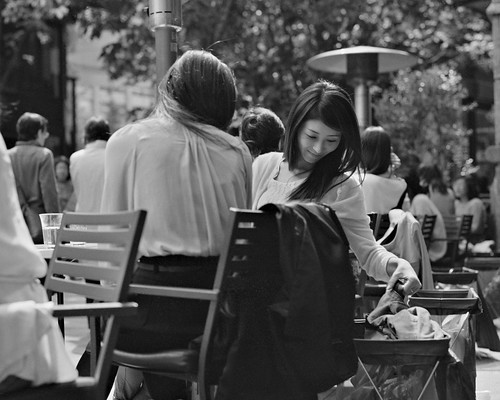
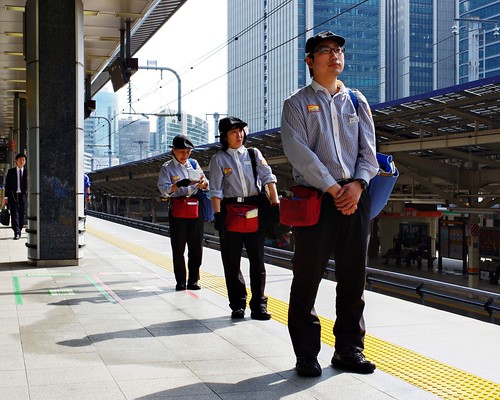

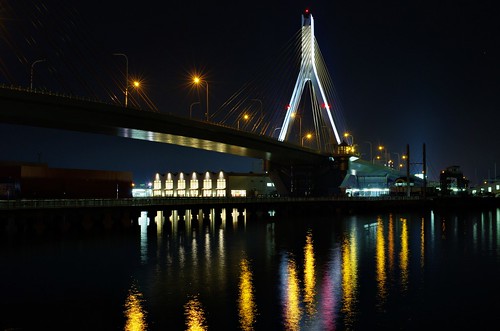
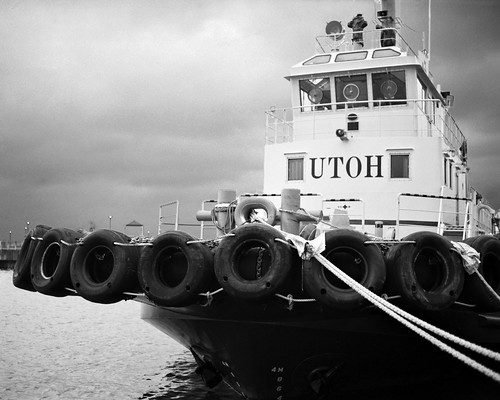

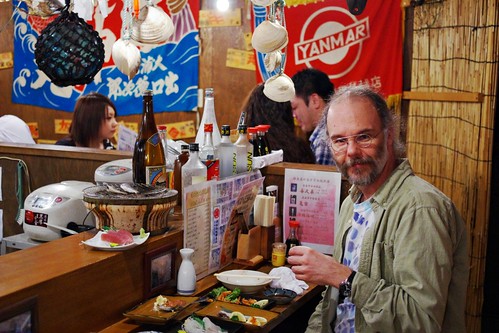
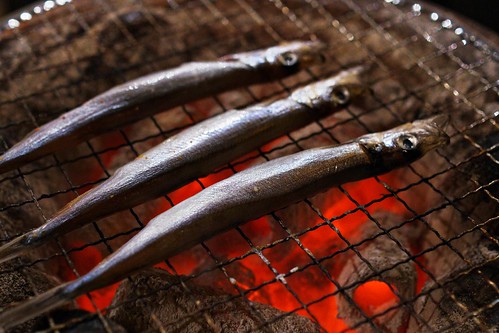
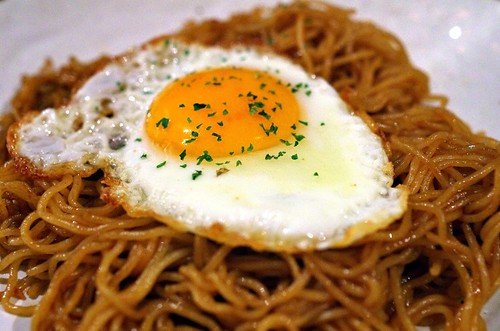
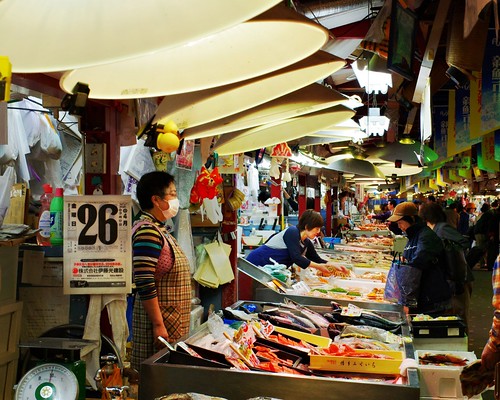

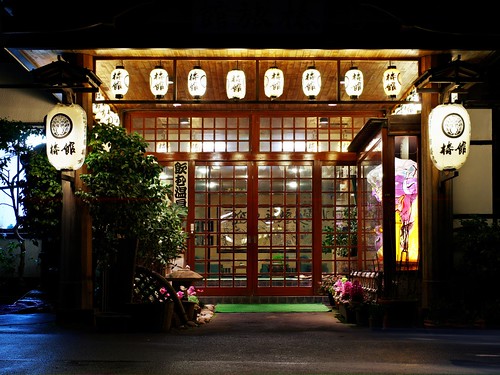

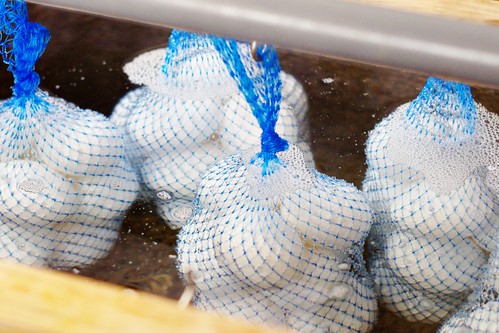


No comments:
Post a Comment
Comment away. Be nice. I no longer allow anonymous posts to reduce the spam.